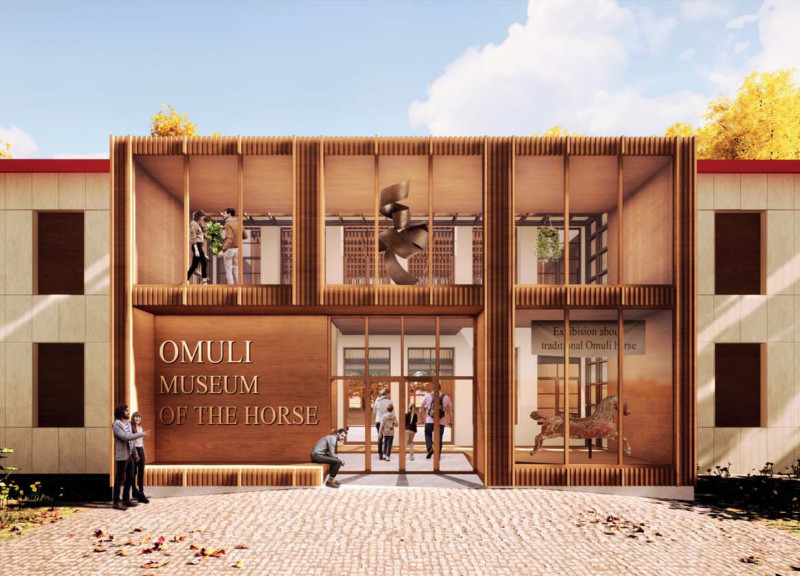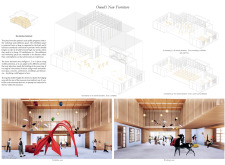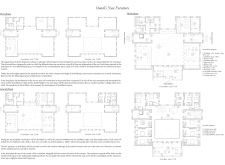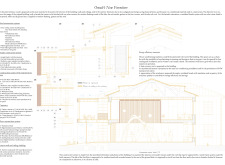5 key facts about this project
This design represents a symbiotic relationship between nature and the built environment, achieved through careful consideration of form, materiality, and spatial organization. It functions not only as a residential or commercial space but also as a gathering point that fosters community interaction and engagement. By prioritizing accessibility and inclusivity, the project caters to diverse user needs, allowing for a flexible approach to occupancy that adapts over time.
Important elements of the design include an open floor plan that enhances the flow of movement throughout the space. This layout facilitates both privacy and communal living, allowing users to enjoy personal spaces while still being connected to communal areas. Large windows dominate the facade, providing ample natural light and breaking down the barriers between the interior and exterior. This connection to the outdoors is further emphasized through the deliberate positioning of landscaping elements that enhance the aesthetic and ecological value of the surroundings.
The facade treatment is particularly notable for its use of sustainable materials like low-emissivity glass and [specific types of wood or metal], which not only add a modern flair but also contribute to energy efficiency. The selection of materials reflects a conscious effort to balance durability with environmental responsibility. Each material was chosen not just for its function, but also for its ability to harmonize with the overall design ethos. Natural stone pathways and planting areas serve to soften the built environment, while also supporting local biodiversity.
Unique design approaches are evident in the project’s attention to integrating green technologies and principles. Rainwater harvesting systems, energy-efficient heating and cooling methods, and solar panel installations demonstrate an awareness of the growing importance of sustainability in architecture. These elements are woven into the design in a manner that is seamless and unobtrusive, allowing them to contribute to the overall narrative of the building without overshadowing its aesthetic qualities.
Moreover, the project considers the surrounding community and cultural context in its design. The incorporation of local materials and architectural motifs pays homage to regional traditions while presenting them through a contemporary lens. This nuanced approach helps to create a sense of place, lending authenticity and relevance to the structure within its geographical setting.
The landscaping complements the architecture through carefully curated green spaces that promote health and wellbeing. Native plants and open areas provide opportunities for recreation and relaxation, further bridging the gap between built and natural environments. The integration of outdoor gathering spaces encourages social interaction, making the project a vibrant hub within its community.
This architectural project exemplifies a thoughtful approach to design, marrying form and function while being sensitive to its environment. The result is a space that not only meets the practical needs of its users but also enhances their overall experience of the environment. Readers interested in exploring this project further are encouraged to delve into the architectural plans, architectural sections, and architectural designs to gain a more comprehensive understanding of the myriad ideas that inform this compelling project. Engaging with these elements will provide valuable insights into the innovative approaches that have shaped this architectural endeavor and the thoughtful details that contribute to its success.


























